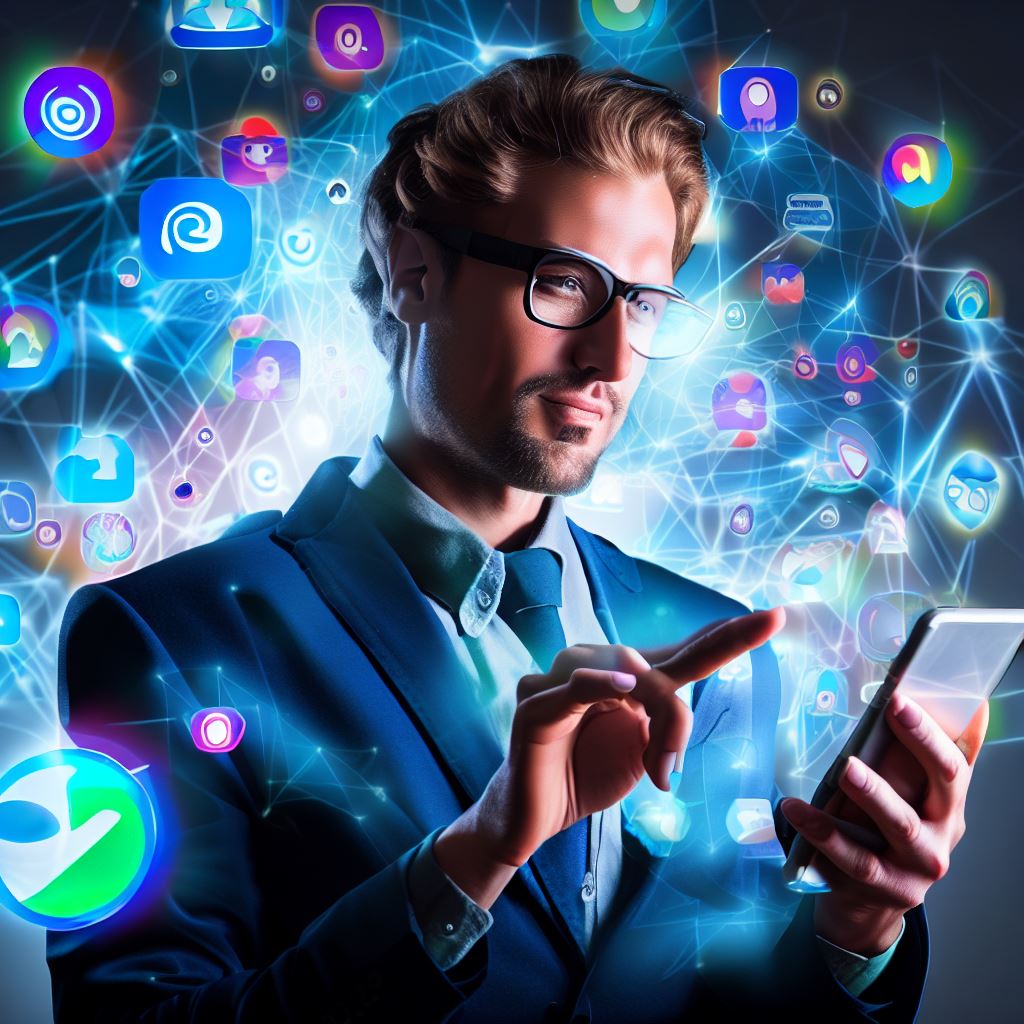Introduction
In the digital age, accessibility is more than just a buzzword—it’s a fundamental requirement for inclusivity.
Accessibility in coding means designing websites, applications, and software in a way that ensures equal access and usability for all individuals, regardless of their abilities or disabilities.
The focus of this blog post is to shed light on the critical role that coding plays in creating a more inclusive USA.
By implementing accessible design and development practices, coders can break down barriers and provide equal opportunities for everyone.
Throughout this section, we’ll delve into various aspects of accessibility in code, exploring how it benefits individuals with disabilities, enhances user experiences, and fosters a more inclusive society.
Additionally, we’ll discuss the legal and ethical implications of accessibility and share practical tips for coders to make their projects more inclusive.
Let’s embark on this journey to understand how code can contribute to a more accessible and equitable USA.
In this blog section, we will explore the importance of accessibility in code and its impact on various individuals and groups in society.
We will also discuss the concept of inclusive design and its connection to accessibility in coding.
Understanding Accessibility in Code
In this blog section, we will explore the importance of accessibility in code and its impact on various individuals and groups in society.
We will also discuss the concept of inclusive design and its connection to accessibility in coding.
A. Accessibility and its significance in the tech industry
Accessibility refers to the inclusive practice of designing and developing technology that can be used by individuals with disabilities or limitations.
In the tech industry, accessibility is crucial as it ensures that everyone, regardless of their abilities, can access and use digital products and services.
B. The impact of inaccessible code on various individuals/groups in society
Inaccessible code negatively affects individuals with disabilities, such as visually impaired users who rely on screen readers or motor-impaired users who use alternative input devices.
It also impacts older adults, those with temporary impairments, or individuals in low-resource environments who rely on accessible technology.
Tech Consulting Tailored to Your Coding Journey
Get expert guidance in coding with a personalized consultation. Receive unique, actionable insights delivered in 1-3 business days.
Get StartedBy creating inaccessible code, developers unintentionally exclude these individuals, preventing them from fully participating in the digital world.
This exclusion can lead to a lack of equal opportunities, exclusion from online services, and a diminished quality of life for affected individuals.
C. The concept of inclusive design and its connection to accessibility in coding
Inclusive design is the approach of designing products and services that are usable by as many people as possible, including individuals with disabilities.
It involves considering diverse user needs right from the start of the design process.
Accessibility in coding is a fundamental aspect of inclusive design.
By incorporating accessibility principles into the code, developers can ensure that the end product is usable and inclusive for a broader range of users.
Inclusive design considers factors such as ensuring proper keyboard navigation, providing alternative text for images, using meaningful page titles, and considering color contrast for readability.
These practices make the code more accessible and improve the overall user experience for all users.
Moreover, implementing accessibility in coding also has benefits beyond disability inclusion.
It enhances usability for all users, including those with temporary impairments, slow internet connections, or non-English speakers.
In summary, accessibility in coding is vital in creating a more inclusive tech industry.
It allows individuals with disabilities or limitations to access and use digital products and services, ensuring equal opportunities for everyone.
Through inclusive design, developers can ensure that their code is accessible to a wide range of users, benefiting both disabled and non-disabled individuals.
Current Challenges and Inequities
When it comes to accessibility and code, there are existing barriers and challenges that need to be addressed.
Build Your Vision, Perfectly Tailored
Get a custom-built website or application that matches your vision and needs. Stand out from the crowd with a solution designed just for you—professional, scalable, and seamless.
Get StartedMarginalized communities in the USA face unequal access and opportunities, leading to further exclusion.
Let’s delve into these challenges:
- Existing Barriers: The accessibility of code is hindered by various factors such as inadequate education and training, lack of inclusive design practices, and limited availability of assistive technologies.
- Unequal Access and Opportunities: Marginalized communities, including people with disabilities, individuals from low-income backgrounds, and non-English speakers, often face limited access and opportunities in the coding field.
- Inaccessible Code Examples: There are numerous instances where code fails to cater to the needs of diverse users. For example:
- Lack of Alternative Text: Images without descriptive alternative text make it inaccessible to users who rely on screen readers to understand the content.
- Unintuitive Navigation: Poorly designed navigation bars and menus can be confusing, especially for users with cognitive disabilities or motor impairments.
- Non-Responsive Design: Websites or applications that do not adapt to different screen sizes and devices exclude users who rely on alternative devices or have visual impairments.
- Insufficient Captioning: Videos without captions or transcripts make it difficult for individuals with hearing impairments to access the information being conveyed.
Consequences of Inaccessible Code
The consequences of inaccessible code are far-reaching, perpetuating a cycle of exclusion and limiting opportunities for individuals:
- Digital Divide: Inaccessible code widens the digital divide, as marginalized communities are unable to fully participate in the increasingly digitized world.
- Exclusion from Education and Job Opportunities: Limited access to accessible code and coding education sidelines marginalized individuals, hindering their chances of pursuing a career in the field.
- Social Isolation: Inaccessible code can isolate individuals, preventing them from engaging with online communities, accessing crucial information, and participating in social activities.
- Reinforcing Inequality: The lack of accessible code reinforces existing societal inequalities, perpetuating discrimination and limiting the progress towards a more inclusive society.
Addressing these challenges and inequities requires collective effort and a commitment to inclusivity at every level of code development.
It is crucial to prioritize accessibility to create a more inclusive USA, ensuring equal access and opportunities for all individuals.
Read: Digital Justice: How Coders are Shaping U.S. Law
Laws and Guidelines for Accessible Code
Creating accessible code is essential for ensuring that individuals with disabilities can fully participate in the digital world.
To achieve this goal, there are legal requirements and guidelines in place that developers need to adhere to.
A. Legal Requirements
- The Americans with Disabilities Act (ADA): This landmark legislation prohibits discrimination against individuals with disabilities and applies to websites and digital tools.
- Section 508: This federal law mandates that electronic and information technology developed, procured, maintained, or used by the federal government must be accessible to people with disabilities.
- State and Local Laws: Many states and local entities have laws that require websites and digital tools to be accessible to individuals with disabilities.
B. Guidelines for Creating Accessible Code
- Web Content Accessibility Guidelines (WCAG): Developed by the World Wide Web Consortium (W3C), WCAG provides a set of guidelines for making web content more accessible.
- Accessible Rich Internet Applications (ARIA): ARIA is a set of attributes that can be added to HTML to enhance accessibility for users of assistive technologies.
- Accessible Name and Description Computation (Accname): Accname provides guidance on how to ensure that assistive technologies can correctly identify and describe elements in web content.
C. Government Initiatives and Organizations
The government plays a crucial role in promoting accessibility in coding through various initiatives and organizations:
- Section 508 Refresh: In 2017, the U.S. Access Board updated the Section 508 standards to align with WCAG 2.0, further emphasizing the importance of accessibility in government technology.
- Section508.gov: This website provides resources and guidance on implementing accessible technology in accordance with Section 508 requirements.
- Accessible Technology Program (ATP): ATP is a federal program that provides funding and support for projects aimed at increasing digital accessibility.
- International Code Council (ICC): The ICC develops and maintains a set of accessibility standards known as the International Codes, which ensure that buildings, facilities, and sites are accessible to individuals with disabilities.
D. Resources and Tools for Developers
Developers have access to various resources and tools that can help them create accessible code:
- Web Accessibility Initiative (WAI): WAI provides extensive documentation, guidelines, and techniques for creating accessible web content.
- Web Accessibility Evaluation Tools: There are numerous automated tools available, such as WAVE, a web accessibility evaluation tool, that developers can use to identify accessibility issues in their code.
- Screen Reader Software: Developers can utilize screen reader software like JAWS or NVDA to test the accessibility of their code and ensure compatibility for users with visual impairments.
In fact, developers must comply with legal requirements and follow established guidelines to create accessible code.
Government initiatives and organizations play a vital role in promoting accessibility, while developers can leverage available resources and tools to aid in their coding efforts.
By prioritizing accessibility, we can create a more inclusive digital landscape for everyone.
Read: The Power of Open Source in USA’s Coding Movement
Optimize Your Profile, Get Noticed
Make your resume and LinkedIn stand out to employers with a profile that highlights your technical skills and project experience. Elevate your career with a polished and professional presence.
Get NoticedPromoting Inclusivity Through Code
In today’s digital age, accessibility and inclusivity are essential in creating a more inclusive society.
By harnessing the power of code, we have the opportunity to break down barriers and ensure equal access to technology for everyone.
In this section, we will explore how promoting inclusivity through code goes beyond simple compliance with regulations.
We will also discuss the crucial role that educational institutions, coding boot camps, and professional organizations play in fostering inclusivity through code.
Additionally, we will highlight some successful initiatives and projects that prioritize accessibility and inclusivity.
A. Exploring the Benefits of Creating Accessible Code Beyond Compliance
While compliance with accessibility standards is crucial, it is equally important to understand the broader benefits that accessible code offers.
By designing and developing websites, applications, and other digital platforms with accessibility in mind, we create a more inclusive digital environment.
Accessible code ensures that individuals with disabilities can access and use technology, providing equal opportunities for all.
Moreover, accessible code often leads to better user experiences for everyone, as it considers various needs and preferences.
B. The Role of Educational Institutions, Coding Boot Camps, and Professional Organizations
Educational institutions, coding boot camps, and professional organizations have a significant role in promoting inclusivity through code.
These institutions serve as the primary sources of education and training for aspiring developers.
By incorporating accessibility principles into their curricula, they can instill the importance of creating inclusive code in the next generation of developers.
Moreover, they can actively encourage and support students in taking a proactive stance towards accessibility in their coding practices.
Coding boot camps, with their condensed and intensive programs, have the unique opportunity to quickly disseminate knowledge and best practices for inclusive coding.
By incorporating accessibility topics into their curriculum, they ensure that aspiring developers are well-equipped with the necessary skills to create accessible and inclusive digital solutions.
Professional organizations are also instrumental in promoting inclusivity through code.
By organizing conferences, workshops, and webinars on accessibility and inclusivity, these organizations provide valuable resources and networking opportunities for developers.
They can also advocate for inclusive coding practices and collaborate with other stakeholders to influence industry-wide change.
C. Highlighting Successful Initiatives and Projects
Many initiatives and projects have successfully prioritized accessibility and inclusivity in their code.
One notable example is the TeachAccess initiative, a collaboration between industry professionals, academic institutions, and advocacy groups.
TeachAccess aims to make accessibility education a core component of computer science and design curricula, ensuring that future developers have a solid foundation in creating accessible technology.
Another successful project is the Accessibility Project, an open-source community-driven initiative.
The project provides resources, guidelines, and best practices for developers to create accessible websites.
Through their collaborative efforts, they demonstrate that accessible code is not only achievable but also beneficial.
Organizations like the Web Accessibility Initiative (WAI) and A11yProject.com also contribute extensively to promoting inclusivity through accessible code.
They provide comprehensive guidelines and resources for developers to make their digital platforms accessible to all users.
In essence, promoting inclusivity through code is crucial for creating a more inclusive society.
Beyond compliance, accessible code offers a multitude of benefits and better user experiences for all.
Educational institutions, coding boot camps, and professional organizations play a vital role in fostering inclusivity through code.
By highlighting successful initiatives and projects, we can inspire more developers to prioritize accessibility and inclusivity in their coding practices.
Let us continue to work together towards a future where technology is genuinely accessible to everyone.
Read: Preparing for Coding Wars: Tips to Excel in Competitions
Best Practices for Creating Accessible Code
To assist developers in creating accessible code, here are practical tips and guidelines:
- Include descriptive alt text for all images, ensuring accessibility for visually impaired users.
- Use proper heading structure (h1, h2, h3, etc.) to organize content and enhance navigation.
- Implement keyboard navigation for users with motor disabilities.
- Avoid relying solely on color; provide text or icons as alternatives for conveying information.
- Ensure proper labels for screen readers on all forms and interactive elements.
- Enhance accessibility for complex web components with ARIA (Accessible Rich Internet Applications) attributes.
- Employ automated accessibility tools for code testing and issue identification.
- Conduct user testing involving individuals with disabilities for feedback and insights.
- Consider closed captions or transcripts for multimedia content, benefiting the deaf or hard of hearing.
Developers are essential contributors to an inclusive web experience, adhering to best practices and guidelines.
Descriptive alt text aids visually impaired users, while heading structure organizes content.
Keyboard navigation caters to motor disabilities, and avoiding color reliance benefits those with color blindness.
Proper labels assist screen reader users, and ARIA attributes enhance complex components.
Automated tools expedite issue identification, but user testing with individuals with disabilities is crucial.
Multimedia content should have closed captions or transcripts.
In summary, accessible code relies on best practices, user input, and understanding disability challenges, fostering an inclusive digital environment.
Read: Elevate Your Resume: Why Employers Value Coding Skills

Case Studies and Success Stories
Case studies and success stories of organizations, websites, or applications implementing accessible code serve as inspiration for creating a more inclusive USA.
These examples demonstrate how technology can be used to break down barriers and provide equal access to information and services.
A. American Red Cross: Championing Accessibility
American Red Cross, a non-profit dedicated to promoting accessibility, redesigned their website using accessible code.
By adopting industry standards, they ensured that people with disabilities could easily navigate and interact with their site.
Their efforts resulted in a significant increase in website traffic from diverse audiences, including individuals with disabilities.
By making their content accessible American Red Cross effectively expanded their reach and engaged a larger audience.
This example demonstrates the power of accessible code in fostering inclusivity.
B. Amazon: A Barrier-Free Experience
Amazon, an e-commerce platform, implemented accessible code to accommodate users with various disabilities.
They prioritized providing alternative text for images, captions for videos, and clear headings for easy navigation.
This commitment to accessibility not only enhanced the user experience for people with disabilities but also improved the overall usability of the site.
As a result, Amazon experienced higher customer satisfaction rates and increased sales.
Their success shows that accessible code benefits both users and businesses.
C. TikTok: Empowering Independence
TikTok, a mobile app developed for individuals with visual impairments, integrated accessible code to enable voice commands and screen reader compatibility.
This innovative solution facilitated independent navigation and app usage.
By implementing accessible code, TikTok empowered individuals with visual impairments to perform a range of tasks without relying on assistance.
The app’s positive impact on users’ lives highlights the importance of creating technology that is inclusive and empowering.
These case studies and success stories illustrate the effectiveness of implementing accessible code in achieving a more inclusive USA.
They provide valuable lessons and insights for organizations, web developers, and designers.
D. Lessons Learned
- Accessibility is not just a legal requirement but also a business opportunity. By prioritizing inclusive design, organizations can expand their reach and improve customer satisfaction.
- Following industry standards for accessible code is essential. Implementing features such as alternative text, captions, and proper headings enables equal access to information and services.
- User testing and feedback are crucial. Engaging individuals with disabilities throughout the development process helps identify and address accessibility barriers effectively.
The positive impact of these endeavors cannot be understated.
Implementing accessible code creates a more equitable society, where everyone can participate and contribute.
It is crucial for organizations and individuals to embrace the lessons learned from these case studies and success stories to continue building a fully inclusive USA.
Future Directions and Opportunities
Technology advancements have the potential to further improve accessibility in code.
Here are some key areas to consider:
1. Artificial Intelligence and Machine Learning
- Advancements in AI and ML can enable automated accessibility testing of code, reducing the manual effort required.
- These technologies can help identify and fix accessibility issues during the development process.
- Machine learning algorithms can learn from user interactions to provide personalized accessible experiences.
2. Voice User Interfaces (VUI)
- VUI allows users to interact with software through voice commands, providing a more accessible option for individuals with mobility or visual impairments.
- Developing code that supports VUI can enhance accessibility and provide a more inclusive user experience.
- Integrating technologies like speech recognition and natural language processing can improve the accuracy and responsiveness of VUI.
3. Internet of Things (IoT)
- IoT devices offer new opportunities for accessibility, such as smart home automation and assistive technologies.
- By incorporating accessibility features into IoT devices, developers can create more inclusive and accessible environments.
- For example, IoT devices can be controlled via voice commands, providing accessibility options for individuals with limited mobility.
Now let’s highlight some emerging trends and practices in creating accessible code:
4. Designing for Mobile Accessibility
- With the increasing use of mobile devices, it’s essential to prioritize accessibility in mobile app development.
- Considerations should include touch targets, font size, color contrast, and support for screen readers.
- By following best practices for mobile accessibility, developers can ensure their apps are usable by a wider range of users.
5. Integrating Accessibility Early in the Development Process
- Designing for accessibility from the beginning can save time, effort, and resources later on.
- Developers should educate themselves on accessibility guidelines and involve accessibility experts in the planning and design phases.
- Accessibility testing should be performed throughout development to identify and address issues early.
6. Collaborating with the Accessibility Community
- Engaging with the accessibility community can provide valuable insights and feedback.
- Participating in conferences, forums, and online communities can help developers stay updated on the latest accessibility trends and practices.
- By collaborating with accessibility advocates, developers can contribute to a more inclusive digital landscape.
Lastly, I want to encourage readers to prioritize inclusivity and accessibility in their coding practices:
- Always consider the diverse needs of users and aim to create experiences that are accessible to everyone.
- Stay informed about accessibility guidelines and incorporate them into your coding standards.
- Test your code for accessibility regularly and address any identified issues promptly.
- Seek feedback from diverse users to further improve the accessibility of your applications.
By making inclusivity and accessibility a priority, developers can contribute to a more inclusive society and create a positive impact through their code.
Conclusion
Accessibility and inclusivity in coding are essential for creating a more inclusive USA.
By making code accessible, we can ensure that everyone, regardless of their abilities, can use technology.
Accessible code allows individuals with disabilities to fully participate in society, access information, and engage with digital products.
Creating a more inclusive USA through accessible code is not only a legal and ethical responsibility but also a way to foster innovation and reach a wider audience.
As developers, we have the power to make a positive impact and drive social change by embracing inclusive design principles.
By considering accessibility from the beginning, we can foster creativity, remove barriers, and enhance the user experience for all.
Let’s make a commitment to prioritize accessibility and inclusivity in our coding endeavors.
Let’s educate ourselves, advocate for inclusive practices, and collaborate with others to build a more accessible and inclusive digital landscape.
To truly create a more inclusive USA, it is crucial that we all take action and embrace inclusive design principles in our coding.
Together, we can ensure that technology empowers and includes everyone, regardless of their abilities or backgrounds.
Let’s work towards an inclusive future where no one is left behind.
Start coding inclusively today.




